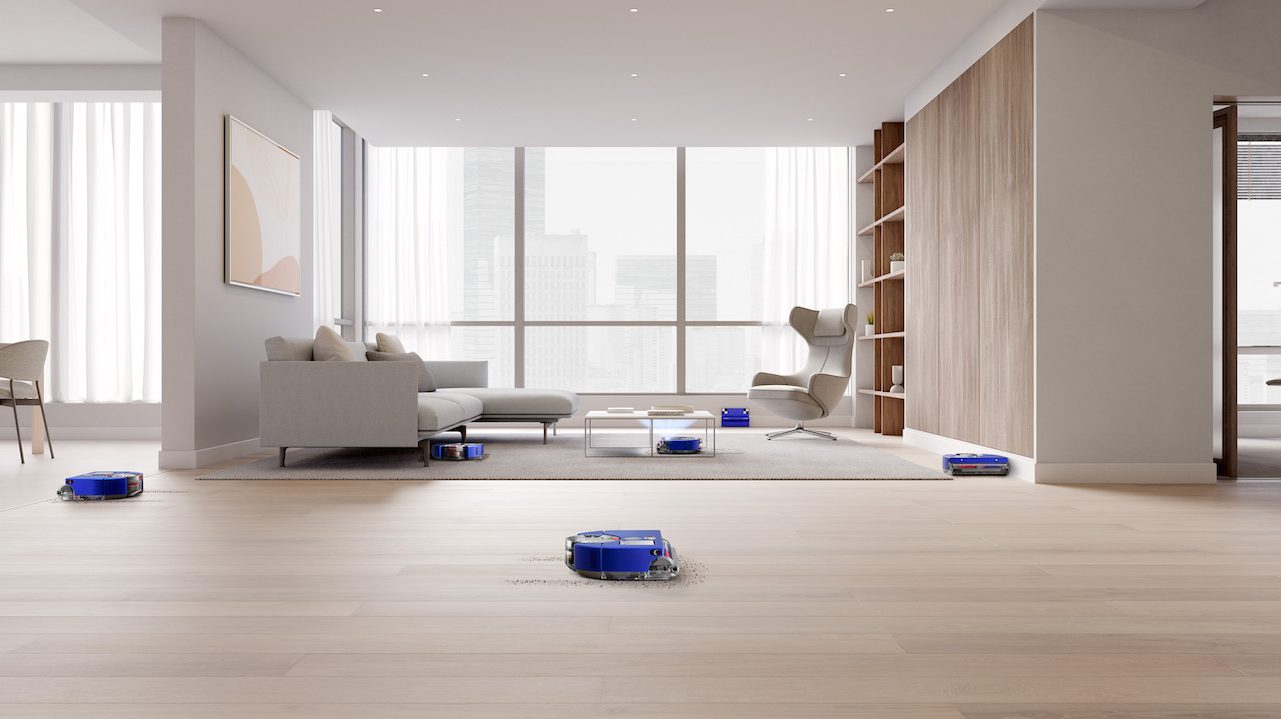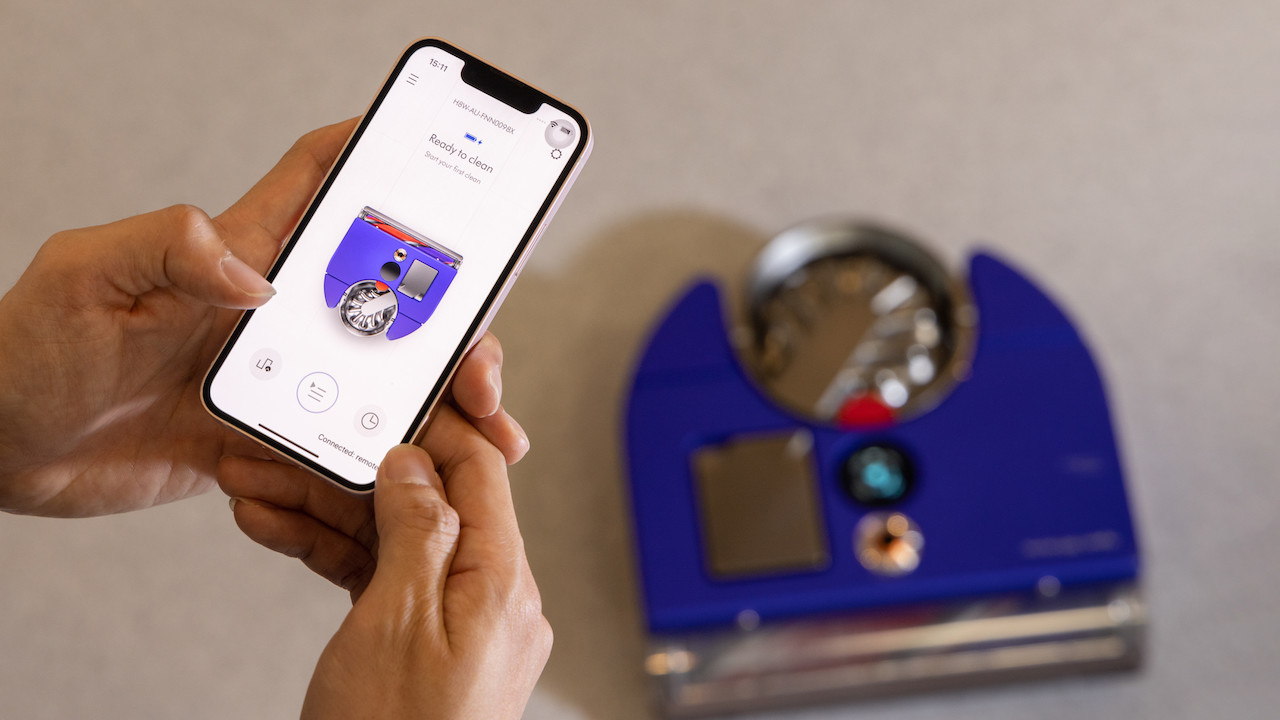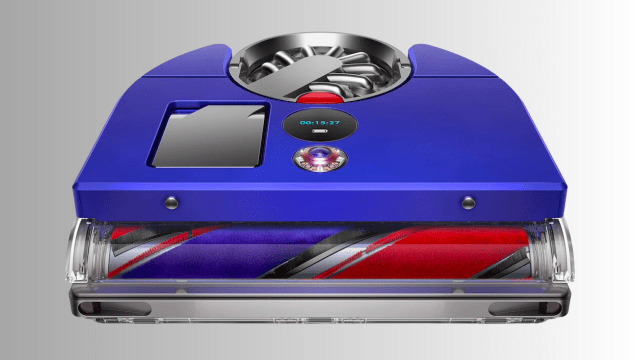Dyson today announced a brand-new robot vacuum cleaner. The 360 Vis Nav will be the first robot vacuum cleaner the company has actually released in Australia, and, more than that, Australia and Japan will be the only countries to get the 360 Vis Nav at first.
To get the elephant in the room out of the way first, the 360 Vis Nav is expensive. It will be $2,399. For context, the most expensive robot vacuum cleaner at JB Hi-Fi is the Roborock S8 Pro Ultra Robotic Vacuum and Mop Clean with Auto-Emptying Dock at $2,699. As the very, very long name implies, that robot vacuum can vacuum, mop and then empty itself. The Dyson 360 Vis Nav (which is somehow a less catchy name) just vacuums, and still expects you to empty it and then manually mop.
There are a few things that make the 360 Vis Nav special, but my favourite is that it has a little arm to get into corners and near walls. Most other robot vacuum cleaners just spin little brushes and hope for the best, but the Dyson 360 Vis Nav has a proximity sensor for when it’s near a wall, and then deploys a little suction arm, called the ‘extending side actuator’, (that slightly looks like a little tongue) to actively suck up the dust from the sides. Having seen it in action, I would place its effectiveness as less good than a proper stick vacuum, but significantly better than any other robot vacuum I’ve ever tried.
The more important thing, other than the tongue arm that will lick your corners clean, is the suction power which is 65 air watts. Dyson assures me that’s somewhere between 6-65 times the suction of other robot vacuums on the market, but while I can find various specs for the motors in competitor robots, none seemed to quote the air watt numbers. So, the best comparison based on pure numbers is the Dyson V8 stick vac, which also had 65AW, or the latest Dyson Gen 5 Detect which is 265AW.

A robot vacuum is nothing without its sensors, and it appears that a decent chunk of the $2,399 asking price goes to decking it out with many, many sensors. The name comes from the 360-degree camera which has time of flight sensors to work out how far it is from the wall, or your couch. Unfortunately, it will not learn if it repeatedly gets stuck under the credenza or gets stuck eating cables under the TV, so you will need to manually set boundaries in the app which will make a map of your home. There’s another sensor that will map a heat map of the dust in your home, so you can have cursed knowledge of which bits are the grossest. That way, you can both clean that area more and try to avoid it when possible.
While some robot vacuum cleaner makers are proudly advertising that their robots can be used as in-home surveillance devices, allowing you or anyone who can crack your password have access to the camera and microphone, as though that’s a good thing and not a horrifying new step in surveillance, this robot doesn’t do that. While the vacuum cleaner can see all, none of the camera feed is sent to the cloud or viewable to anyone that isn’t the robot. So, this is better suited those that don’t want a robot vacuum cleaner that cleans while watching and listening to everything you do (while presumably mining that data for advertising purposes).

One fun part of going to the Dyson Singapore R&D office for the announcement of the 360 Vis Nav was watching the engineers take great delight in sending the 360 Vis Nav and an unmarked ‘competitor product’ (that I think might have been an Ecovacs robot) through various mazes. The one that was the most impressive was a plank of various floor coverings with little plastic containers below holding small morsels for the vacuum cleaners. The ‘competitor product’ barely touched the morsels, while the 360 Vis Nav sucked them all up with gay abandon. Real-world usage will of course be the real test, but it was an impressive demonstration.
Pre-orders are open now, with the Dyson 360 Vis Nav in stores from May 25. I travelled to Singapore to see this thing as a guest of Dyson and you best believe I’ll have a review for you in the next two weeks.
Where to preorder: Bing Lee ($2,399) | Dyson ($2,399) | The Good Guys ($2,399) | Myer ($2,399)
